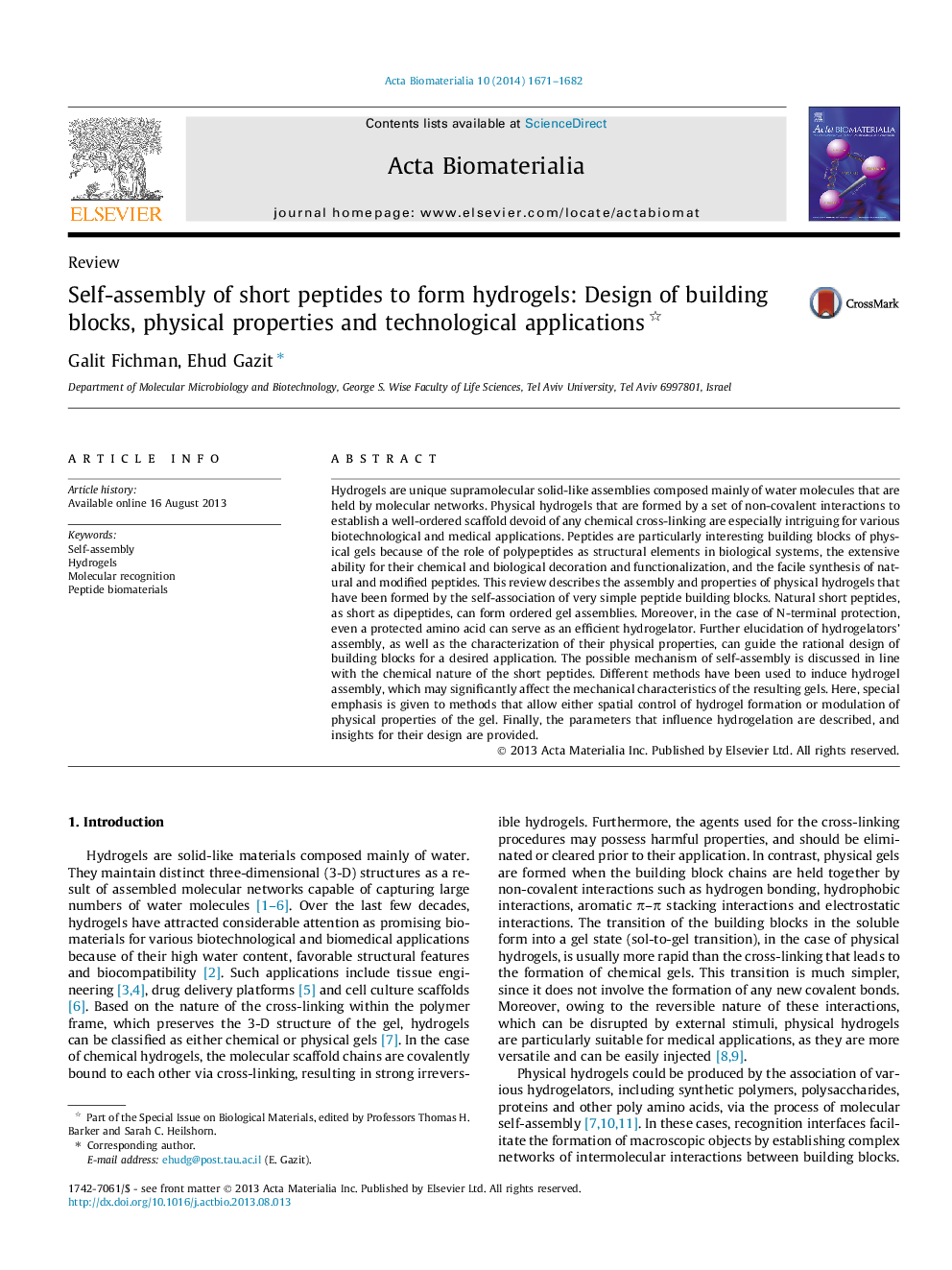| Article ID | Journal | Published Year | Pages | File Type |
|---|---|---|---|---|
| 464 | Acta Biomaterialia | 2014 | 12 Pages |
Hydrogels are unique supramolecular solid-like assemblies composed mainly of water molecules that are held by molecular networks. Physical hydrogels that are formed by a set of non-covalent interactions to establish a well-ordered scaffold devoid of any chemical cross-linking are especially intriguing for various biotechnological and medical applications. Peptides are particularly interesting building blocks of physical gels because of the role of polypeptides as structural elements in biological systems, the extensive ability for their chemical and biological decoration and functionalization, and the facile synthesis of natural and modified peptides. This review describes the assembly and properties of physical hydrogels that have been formed by the self-association of very simple peptide building blocks. Natural short peptides, as short as dipeptides, can form ordered gel assemblies. Moreover, in the case of N-terminal protection, even a protected amino acid can serve as an efficient hydrogelator. Further elucidation of hydrogelators’ assembly, as well as the characterization of their physical properties, can guide the rational design of building blocks for a desired application. The possible mechanism of self-assembly is discussed in line with the chemical nature of the short peptides. Different methods have been used to induce hydrogel assembly, which may significantly affect the mechanical characteristics of the resulting gels. Here, special emphasis is given to methods that allow either spatial control of hydrogel formation or modulation of physical properties of the gel. Finally, the parameters that influence hydrogelation are described, and insights for their design are provided.
